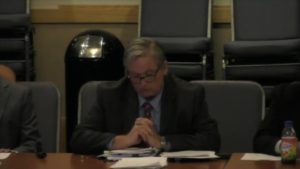
California BAR considers revising requirements for auto body shop equipment
By onAssociations | Business Practices | Legal | Repair Operations | Technology
A proposed rewrite of California’s required body shop equipment would stress OEM specifications while providing more flexibility for future technology.
The Bureau of Automotive Repair effort might have ramifications beyond the Golden State should other lawmakers and regulators eye a similar overhaul.
The current California Code of Regulations Title 16, Section 3351.5 already requires any body shop which paints “to have all equipment and current reference manuals necessary to paint and repair non-structural damage” and every structural shop to have “all repair, measuring, and testing equipment and current reference manuals necessary to diagnose, section, replace or repair structural damage.”
The proposed revision would add a mandate that all body shops “shall have all the required equipment and current reference manuals for the types of vehicles being repaired. All auto body repairs shall be to vehicle manufacturer specifications.”
Mark Guess of the BAR explained in an April 18 workshop that repairers could “obviously” still meet this rule by subletting, but it’d be “prudent” to ensure their subcontractor had all the necessary items.
In discussing the equipment, Guess gave examples like a time limit in thousandths of a second on burn-through for Toyota or GM’s list of approved welders.
“It’s getting really specific,” he said.
BAR Advisory Group member Jack Molodanof (California Autobody Assocaition) said the “All auto body repairs shall be to vehicle manufacturer specifications” was perhaps too rigid.
“That is a pretty strong statement there,” he said.
Sometimes OEMs won’t provide specifications, he said.
He mentioned having worked on 16 CCR 3365, which calls for “OEM service specifications or nationally distributed and periodically updated service specifications that are generally accepted by the autobody repair industry.”
He said shops need such flexibility so they can perform a repair in situations where OEM procedures don’t exist.
“I think we need to do some work on that,” he said.
Guess replied by giving the example of an OEM without a sectioning procedure — because it knew the part shouldn’t be sectioned.
Gene Lopez of Seidner’s Collision Center said some OEMs might not provide measurements — they had to be reverse-engineered for the collision industry by a third party. (However, it should be noted that some OEMs don’t provide measurements to uncertified shops or have warned of reverse-engineered measurements by unapproved equipment manufacturers.)
Lopez also warned that fixing a car to manufacturer specifications could prevent a repairer from using recycled parts. “That might be a consideration as well,” he said.
Guess replied that he was leaning toward clarification that the regulation referred to necessary shop equipment.
The proposed revision would also expand and help future-proof the equipment which is specifically mentioned by 16 CCR 3351.5.
The current 16 CCR 3351.5 appears to date back to 1997 and demands structural shops have “A Metal Inert Gas (MIG) welder with an output of at least 110 amps for unibody repairs and an output of 200 amps for conventional frame repairs or capable of meeting trade standards for the work being performed.”
BAR would under the proposal now require “an auto body repair shop that is performing structural repairs” to have “All welding and panel bonding equipment and materials required for the types of vehicles being repaired” rather than a specific welder class.
“I like the broadness of it,” Molodanof said, asking if it would encapsulate aluminum and carbon-fiber as well as future materials like “Kryptonite.”
Guess said that was the intent and noted the language would encapsulate the proper rivets too.
California Code today also ties repairers to using “flexible and rigid wands” and “spray heads” for corrosion protection. The proposed change would drop that language and permit any devices which accomplish the same spray patterns and coverage described in the law.
The point was getting corrosion protection in unaccessible areas, not what device you used to accomplish it, as Guess explained.
Finally, the BAR proposal also revamps the language pertaining to measuring and pulling systems.
• A three-dimensional measuring system would have to record length, width and height relative to “centerline, body zero, and datum plane” instead of the less specific “three defined reference planes” mentioned today.
“This is calling them what they are,” Advisory Group member Dave Robinette (I-CAR) said. He said those terms are used in training.
• A shop’s four-point anchoring system would now have to be “located in the vehicle center section,” and pulling equipment would now have to make multiple “directional” pulls “simultaneously.”
Lopez feared that the existing term “four-point anchoring system” could be interpreted as permitting pulling with floor pots, which could introduce new damage. He suggested adding language that gets the vehicle “off the floor” and onto a bench.
Guess recalled BAR having seen vehicles pulled with tow hooks and not being anchored in the center of the vehicle.
“You’re right about the floor-pulling,” he said. “… It’s a problem.”
The language regarding pulling “simultaneously” was meant to address structures being pulled with “come-alongs” or friction jacks, Guess said. It was “imperative” a vehicle’s dimensions were restored, he said.
• “Equipment capable of generating enough pulling force to realign the vehicle structure to manufacturer specifications” is also required under a new item.
Be heard: Submit comments on the proposed regulations to Michelle Oberg, 916-255-0911, Michelle.Oberg@dca.ca.gov, or Guess at 916-255-4516, Mark.Guess@dca.ca.gov.
More information:
“Bureau of Automotive Repair Collision Repair Proposals Workshop – April 18, 2019”
California Department of Consumer Affairs YouTube channel, April 18, 2019
Bureau of Automotive Repair proposed collision repair regulations
California Bureau of Automotive Repair, April 18, 2019
Images:
The California Bureau of Automotive Repair’s Mark Guess speaks during an April 18, 2019, workshop on proposed collision repair regulation revisions. (Screenshot from California Department of Consumer Affairs video on YouTube)
